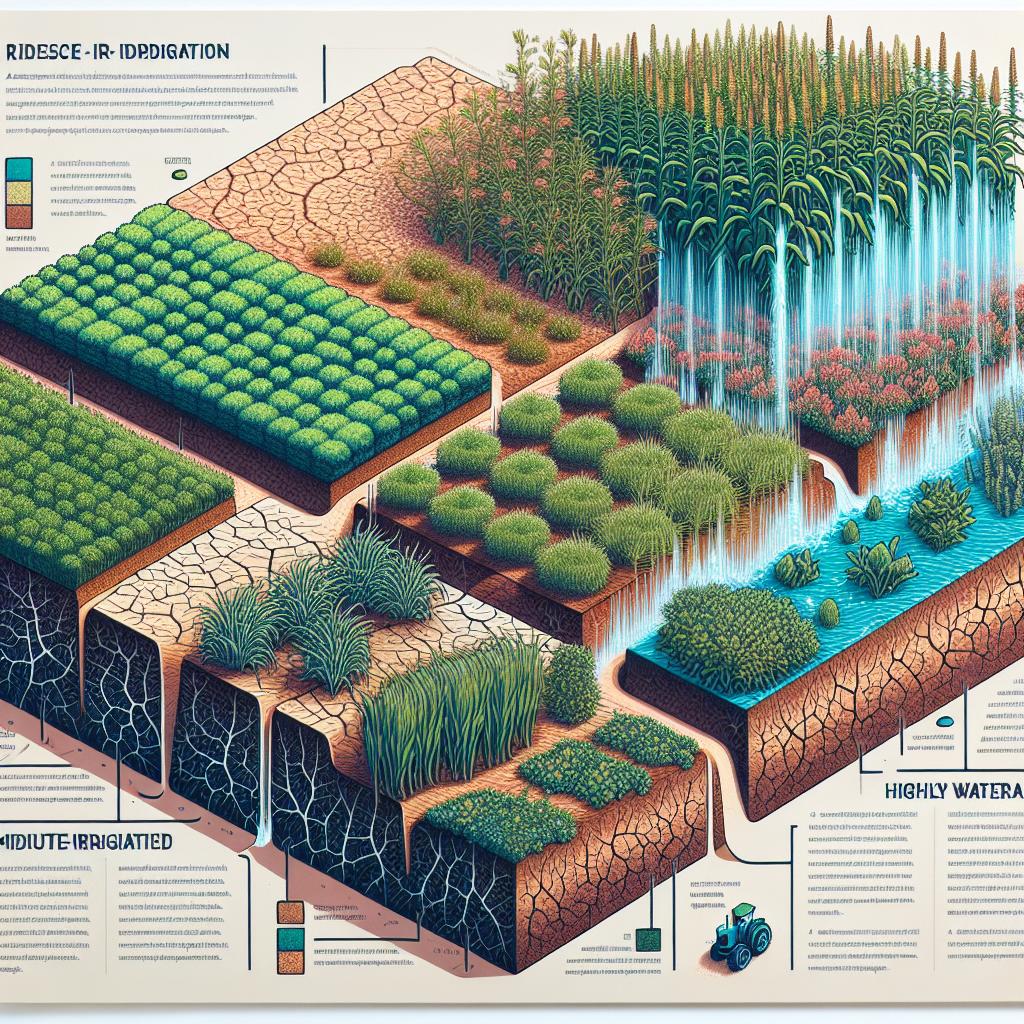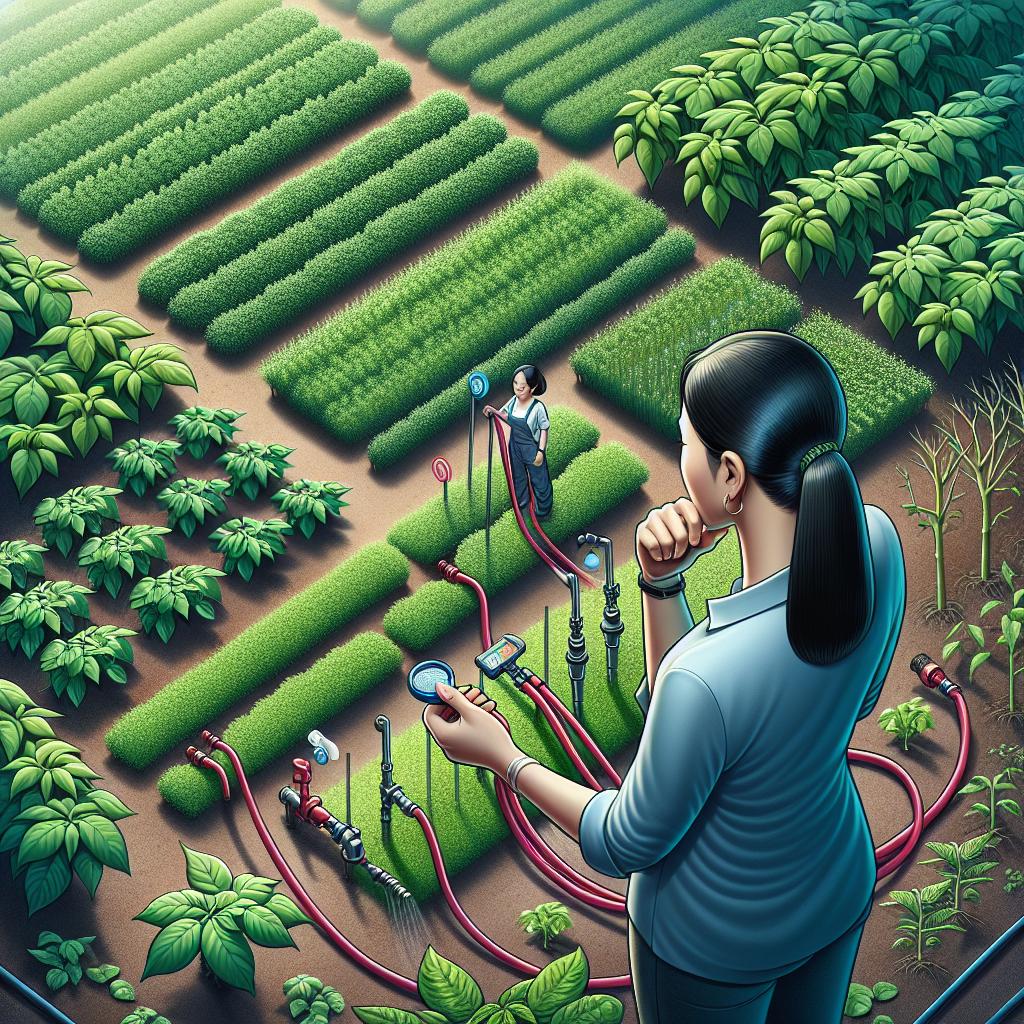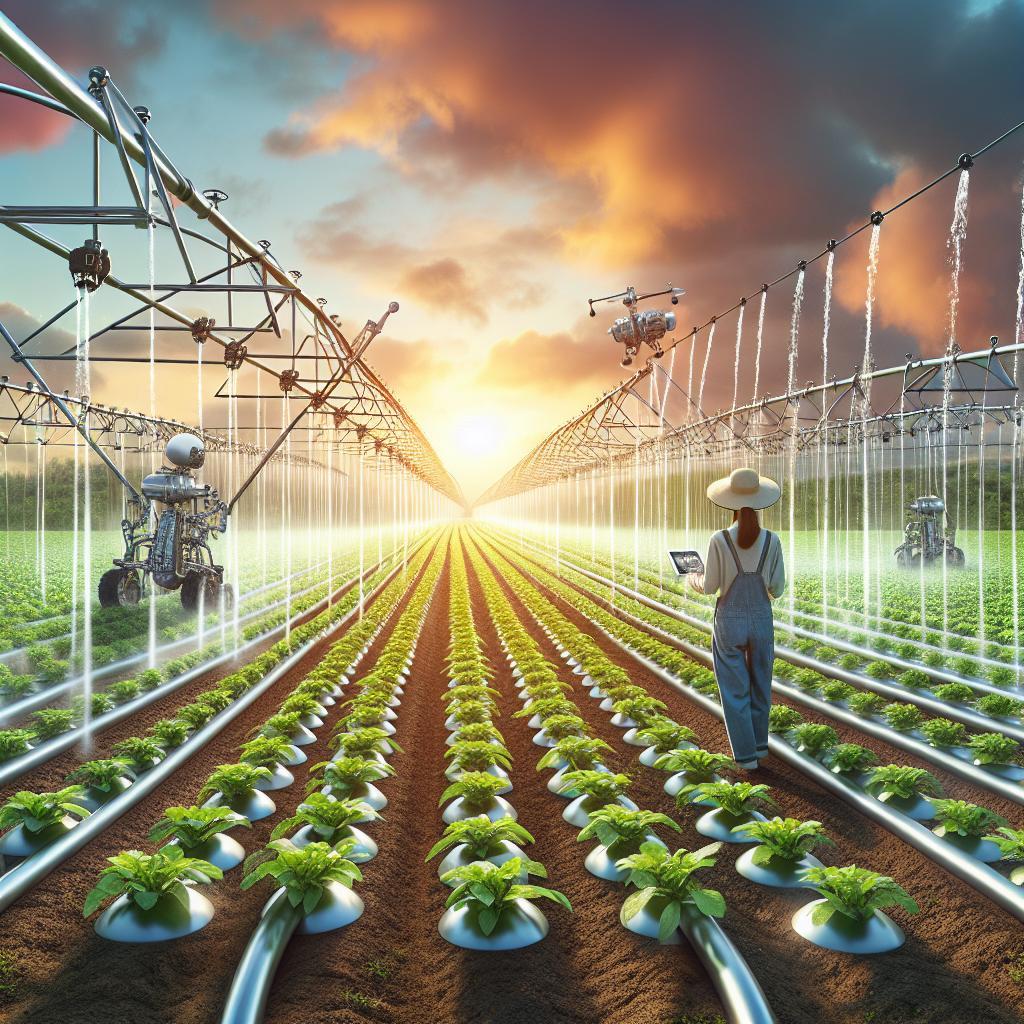This post may contain affiliate links which means I may receive a commission for purchases made through links. Learn more on my Private Policy page.
Introduction:
In the symphony of gardening, where each plant plays its unique note, the harmony can frequently enough be disrupted by the relentless presence of weeds. These uninvited guests not only compete for nutrients but can also overshadow the vibrant blooms and hearty vegetables you’ve lovingly nurtured. But what if we told you that your irrigation system could double as a powerful ally in the fight against these botanical intruders?
Welcome to a garden where water and wisdom flow hand in hand! In this article, we’ll explore innovative ways to harmonize your irrigation practices with effective weed control measures. From the right watering schedules to targeted request techniques, we’ll equip you with the tools and strategies to reclaim your garden space. So grab your gloves, and let’s dig into the world of irrigation-enhanced weed management—where we can cultivate not just a flourishing garden, but also a thriving ecosystem.
Understanding the Relationship Between Irrigation and Weed Growth
When it comes to effective weed control, understanding how irrigation practices influence weed growth is crucial. Weeds thrive in environments that offer adequate moisture, making the timing and frequency of irrigation critical factors. Here are some points to consider:
- Watering Schedule: Adjusting your irrigation schedule to align with the growth stages of your crops can help minimize the water available for weeds.
- Drip Irrigation: This method precisely delivers water to the root zones of plants while keeping the surrounding soil drier, which can significantly reduce weed germination.
- Surface mulching: Adding a layer of mulch can retain soil moisture for desired plants, making it less hospitable for unwanted weeds.
Furthermore, integrating weed control into your irrigation strategy involves both cultural and technological solutions. Analyzing soil moisture levels and adjusting irrigation accordingly can deter weed establishment. The following table outlines some effective practices:
| Practice | Benefits |
|---|---|
| Zone Irrigation | Targets wet areas where crops are grown, leaving dry areas for weeds. |
| Weed Matting | Minimizes direct sunlight and moisture to prevent weed growth. |
| Regular Monitoring | Increases the efficiency of both weed control and water usage. |

Choosing the Right Irrigation Method for Optimal Weed management
When it comes to maintaining a healthy, thriving garden or crop field, the choice of irrigation method can significantly influence not only the growth of desirable plants but also the proliferation of weeds. Various approaches can either suppress or encourage weed growth depending on how they deliver water to the plants. For instance, drip irrigation is notably favored for its efficiency—it delivers moisture directly to the root zones of crops while minimizing water exposure to surrounding soil, which helps in reducing weed germination. On the other hand, surface irrigation, if not managed carefully, can create standing water in areas where weeds thrive. Understanding your specific conditions, including soil type, climate, and weed pressure, will guide you in selecting the most suitable method for optimal control.
Additionally, integrating a precise irrigation schedule can further bolster your weed management strategy. For example, establishing a watering routine that aligns with the growth stages of your crops can give them a competitive edge over weeds. Consider employing techniques such as mulching in combination with your irrigation system; this can retain soil moisture while blocking sunlight to weed seeds. below is a summary of various irrigation methods and their impact on weed growth:
| Irrigation Method | Weed Management Impact |
|---|---|
| Drip Irrigation | Minimizes weed growth by delivering water directly to the roots |
| Surface Irrigation | Can promote weed germination if not managed properly |
| Sprinkler Irrigation | Potential for even weed growth; manage schedule carefully |
| Subsurface Irrigation | Highly effective in suppressing weeds by limiting surface moisture |

Integrating Smart Technology for Precision Control
Elevating your weed control strategy through smart technology can make a critically important difference in achieving a lush, healthy landscape. With advanced irrigation systems, you have the ability to integrate sensors that monitor environmental conditions in real-time. These sensors can help you determine when to water your plants and when to halt irrigation, making sure that weeds don’t have favorable conditions to thrive. By employing smart controllers, you can customize irrigation schedules based on soil moisture levels, ensuring that water is delivered efficiently and only when necessary.
Additionally, leveraging data analytics can empower you with insights that enhance precision in weed management. Consider using a combination of satellite imaging and AI-driven algorithms to identify weed hotspots before they escalate. With this data,you can create targeted intervention strategies,ensuring that treatments are concentrated where they’re most needed without overapplying chemicals.Here’s a brief overview of the benefits:
| Benefit | Description |
|---|---|
| Resource Efficiency | Minimizes water and chemical usage. |
| Time Savings | Automates routines to reduce maintenance time. |
| Enhanced Control | Enables targeted weed intervention. |
| Cost-Effectiveness | Lowers long-term operational expenses. |

Best Practices for Maintaining a Healthy landscape While Managing Weeds
Creating a thriving landscape while keeping weeds at bay requires a blend of strategic planning and regular maintenance. By integrating your irrigation system effectively, you can not only promote the health of your desired plants but also minimize weed growth. To achieve this, consider the following practices:
- Targeted Irrigation: Focus watering directly at the root zones of your plants. This not only helps retain moisture in the right areas but also deprives weeds of the water they need to flourish.
- Mulching: Apply a layer of organic mulch around plants. This suppresses weed growth and retains soil moisture, creating a healthier surroundings for your landscape.
- Timing: Water in the early morning to prevent evaporation and discourage weed germination. This allows your plants to absorb moisture efficiently while minimizing ideal conditions for weed growth.
An effective weed management plan requires awareness of the specific needs of your landscape, which can also be influenced by seasonal changes. Here’s a simple comparison of common irrigation methods:
| Irrigation Method | Best For | Weed Control Benefit |
|---|---|---|
| Drip irrigation | Flower beds and vegetable gardens | Minimizes water on surrounding soil, reducing weed growth. |
| Sprinkler System | Larger lawns and open areas | Can create overspray; requires greater attention to timing and placement. |
| Soaker Hoses | Rows of plants and densely packed gardens | Delivers water slowly directly to the soil, limiting surface moisture for weeds. |
in Conclusion
As we wrap up our journey through the world of weed control and irrigation, let’s take a moment to reflect on the synergetic dance between water and weeds. With the right strategies in place, your irrigation system can blossom into a powerful ally in the ongoing battle against unwanted green intruders.
Remember, effective weed control is not a solitary endeavor; it’s about working in harmony with nature and embracing the tools at your disposal. Whether you choose to adjust your watering schedule, implement smart irrigation technology, or incorporate mulching techniques, each step brings you closer to a thriving, healthy landscape.
So, gather your tools, embrace the learning curve, and watch as your garden transforms into a vibrant oasis, free from the clutches of stubborn weeds. Here’s to a beautiful, bountiful harvest and the satisfaction of knowing that a little planning can go a long way. Happy gardening! 🌱💧
This post may contain affiliate links which means I may receive a commission for purchases made through links. Learn more on my Private Policy page.

